Keywords
|
| health information systems; ICT; analysis; NHMIS; OpenEMR; medical records; comparative analysis. |
I. BACKGROUND
|
| An information system is a computerized system that is used to store, update, retrieve and even verify information which is entered into it. It is connected to a database which is a repository of data from where information or data can be gotten after being stored. A health information system is an information system that deals with storing patient information which can be gotten from patient records, surveys, health plans, and a host of other data sources. Health Information Systems (HIS) are one of the essential building blocks of a health system. A well-functioning HIS should produce reliable and timely information on health determinants, health status and health system performance, and be capable of analyzing this information to guide activities across all other health system building blocks. It uses different types and categories of data to ensure that patient needs are adequately met and understood by bringing together different aspects of a patient’s medical history to be properly managed and understood both by healthcare providers. Health care in Nigeria is influenced by different local and regional factors that impact the quality or quantity present in one location. As a result of this, the health care system in Nigeria has shown spatial variation in terms of availability, and quality of facilities in relation to need. |
II. PROBLEM STATEMENT
|
| Although information technology (IT)-based applications in healthcare have existed for more than three decades, methods to evaluate outputs and outcomes of the use of IT-based systems in medical informatics is still a challenge for decision makers, as well as to those who want to measure the effects of ICT in healthcare settings. Practitioners, program managers and policymakers need to be aware of what is known about the benefits, risks and costs of communication interventions aimed at the prevention and control of communicable disease [4]. |
| However, most healthcare providers in Nigeria continue to lack access to the information they need to deliver the best possible healthcare with available resources and till date the NHMIS still faces major challenges, among which are: |
| • Finance |
| • Shortage of staff |
| • Shortage of materials |
| • Inadequate coordination of data flow |
| • Lack of feedback to peripheral data and |
| • Huge backlog of unprocessed data. |
| Information is vastly more useable if it is in electronic form. Electronic information can be viewed as the raw material, which can then be made available to end users via a range of methods and platforms. Therefore in Nigeria there is a dire need to strengthen the health information system through the provision of appropriate infrastructure, and the establishment of mechanisms or procedures for collecting and analysing health data to provide needed information[3]. |
III. LITERATURE REVIEW
|
| It has been established that stakeholders are interested in patient information in the health sector for reasons pertaining to finances, medical advances, hospital management, and tracking the progress of patients that are currently undergoing treatment [9]. A number of European nations are already considered leaders in the use of electronic medical records in primary care, where physicians have been using electronic medical records in their day-to-day practice for over a decade. As for the current state of HIS knowledge, a 2005 review by Ammenwerth and de Keizer has identified 1035 HIS field evaluation studies reported during 1982–2002 [1]. Over 100 systematic reviews have also been published to date on various HIS evaluation studies [6]. Despite the impressive number of HIS studies and reviews available, the cumulative evidence on the effects of HIS on the quality of care continues to be mixed or even contradictory. |
| Weak health information systems (HIS) are a critical challenge to reaching the health-related Millennium Development Goals because health systems performance cannot be adequately assessed or monitored where HIS data are incomplete, inaccurate, or untimely. Evaluations of routine health facility data have identified consistent problems in HIS completeness, accuracy and timeliness. Other factors associated with poor quality data in resource constrained settings include duplicate, parallel reporting channels and insufficient capacity to analyze and use data for decision making [5]. Simple data quality assessments that engage frontline health workers and data managers have been used to verify, standardize, and improve routine HIS data. Other approaches have focused on technological interventions such as information communication technologies (ICT) designed to reduce errors through reducing data bulkiness and automating data collection, validation, and analysis. |
| Another approach to creating health information systems is to create personal health records for individual patients which are used to store information from the patient’s medical file which are often entered by the patients themselves. It would include prompting questions about health behaviours and diagnoses, medications and laboratory values which are verified by linking electronically to clinical information in electronic health records. By assisting with selfmanagement, offering logistical support for appointments, and providing follow-up, personal records can extend care beyond the clinical encounter. |
| In a study to explore the ability of local-level Public Health Care (PHC) supervisors in rural Nigeria to use quality assurance (QA) management methods to improve the quality of the PHC system in 2006 [7], the supervisors targeted the supervisory system and HIS for improvement.The HIS audit found that a variety of reporting forms were used at PHC facilities and after HIS reporting was standardized, the number of health facilities using a daily disease registry significantly improved during the study period [8]. While this may be true, some previous research indicate that majority of healthcare facilities, even privately owned have no idea what these HIS are and of what advantage they can be in handling their data. This research is therefore going to look into just how much these health practitioners know about existing HIS and of what use they have been to them; if any. |
| Deploying ICT in healthcare environment has helped healthcare professionals to improve the efficiency and effectiveness of healthcare services. Healthcare information systems that can record and locate important information quickly have become a standard practice in many healthcare organizations. As written in a book by G. Hayes et al [5], ‘the path taken as early development of health informatics was unorganized and idiosyncratic’. This implies that while the beginnings of transforming our medical and patient records to digital integrated systems may be rough and sometimes unseemly, it will get better in so far as we follow the guidelines of those that have done it before us, as well as setting our own standards for integrity after these systems may have been designed. |
| Previous research on Health Information Systems (HIS) has shown that there are three broad approaches to designing a HIS, all of which have different bases [4]. These approaches are: |
| A. Evidence-Based Medicine (EBM) |
| It is the conscientious, explicit and judicious use of current best evidence in making decisions about the care of individual patients. The incorporation of patient values and clinical expertise in EBM partly recognizes that many aspects of healthcare depend on individual factors. It applies research information to clinical practice, emphasizing the use of quantitative evidence in the art of clinical decision-making. It has a five step process which can be broadly categorized as: |
| • Translation of uncertainty to an answerable question and includes critical questioning, study design and levels of evidence; |
| • Systematic retrieval of the best evidence available; |
| • Critical appraisal of evidence for internal validity that can be broken down into different aspects; |
| • Application of results in practice; and |
| • Evaluation of performance. |
| B. Inclusion/Exclusion Criteria |
| The inclusion/exclusion criteria extend the assessment to include the reporting of such aspects as inclusion/exclusion criteria, power calculation, and main/secondary effect variables. An example of this is the 20-item scale by Balas et al [2] which includes the study site, sampling and size, randomization, intervention, blinding of patients/providers/measurements, main/secondary effects, ratio/timing of withdrawals, and analysis of primary/secondary variables. |
| C. Data/Feature Quality Comparison |
| The data/feature quality comparison is on HIS data/feature quality by comparing specific HIS features against some reference standards. An example of this is the Jaeschke et al [6] four-item checklist for data accuracy based on sample representativeness, independent/blind comparison against a reference standard not affected by test results, and reproducible method/results. |
| Not having proper information systems means that the available data kept in records are too limited or of insufficient quality to meet diverse information. This also causes delay in decision making in the healthcare industry as disintegrated information becomes difficult to produce in a limited period of time, thereby making it difficult for those decisionmaking processes to be completed in real-time. Lack of efficient health information systems also bring about the fragmentation of data as there is no common or central format for collecting or storing whatever data or information is retrieved from the patients. To ensure that HIS contribute to improved health services, it is essential that policy makers and health system managers utilize available information for ongoing monitoring of plans and programs, as well as for resource allocation purposes [4]. |
IV. NATIONAL HEALTH MANAGEMENT INFORMATION SYSTEM (NHMIS)
|
| In 1986, the Nigerian government adopted Primary Health Care (PHC) as a strategy for improving the health of Nigerians by the year 2000. This resulted in various committees being set up to design methods for monitoring and evaluating the health of Nigerians. However, an outbreak of yellow fever and cerebro-spinal meningitis between 1986 and 1987 showed that the monitoring systems that had been put in place were poor and ill equipped to detect and control epidemics. Thus, a taskforce was set up to investigate the existing monitoring systems, and to establish the Disease Surveillance and Notification (DSN) system. |
| The NHMIS now consists of forms that are used by the Nigerian government to monitor the progress towards stated goals and services of health services. They are used to assess the health status of the population and identify any major health problems that might occur. They consist of routine data collection summary forms (NHMS 000), health facility community outreach forms (NHMS 001A & 001B), and health facility based forms (NHMS 001), all of which are submitted by health facilities to the government for proper and statistical analysis of the state of the nation’s health. |
| The 001 forms are transferred from health centres and community hospitals to the LGAs (Local Government Areas) once a week, where their data are analyzed into the 002 forms and are transferred to the State Ministry of Health (SMOH) quarterly. These forms are then converted into 003 forms and sent to the federal NHMIS at an interval of six months. They then go to research centers for study and subsequent improvement. |
V. OPENEMR
|
| OpenEMR is a free, open source software application that is used for keeping electronic health records and medical practice management. It is an application that runs on several platforms including Windows, Linux and Mac OS. It features integrated electronic health records, a billing system, and appointment scheduling. |
| OpenEMR is used in hospitals because it combines the keeping of patient records with essential elements of running a successful and profitable organization, which is the secondary goal of an established hospital. It was endorsed by various personnel in the healthcare sector during the course of gathering information, and is commonly used by these same personnel to make the job of running a hospital easier and less time consuming. |
VI. RESEARCH FLOW
|
| This describes the way by which the analysis was carried out on the proposed HIS (NHMIS and OpenEMR). The research (fig.1) commenced through information gathering, consultation, preliminary analysis and comparative analysis. The analysis involved the transformation of documented results into statistical figures and terms to depict and denote the graphical impact of each aspect of the HIS under analysis. These figures were then studied and educated conclusions and opinions were given about the effects and characteristics of these HIS. |
| A. Information Gathering |
| This phase of the research involved the gathering of information from various sources, including the internet, archives, libraries and other researchers. The researchers gave their different opinions about the effectiveness of the then proposed research, while also volunteering to be of any help that would be needed in the course of carrying out the research. |
| B. Consultation |
| This occurred in the form of interviews conducted and questionnaires administered. This phase of the research allowed for interaction with personnel that were already in close contact with these HIS, enabling them to state their views on the validity of the research and to express their opinions on what features of these HIS required comparisons, improvements or a complete change. |
| C. Preliminary Analysis |
| This involved the documentation and manual analysis of information, views and opinions derived from previous research and user interaction. It involved the compartmentalization of the different features and aspects of the HIS, and determining which aspects or features warranted comparison. It also involved in depth studying of each HIS to understand what made it different from its peers and what made it unique to its users. |
| D. Comparative Analysis |
| This is the title phase where all comparisons between the HIS are made. Each comparison is backed by statistical, pictorial, and/or graphical evidence to show the reader that these HIS are in fact worthy of comparison. This phase also involved available contrasts being examined as well. The result of this analysis was that conclusions were drawn about the merits and demerits of each HIS, suggestions were made on the aspects that needed improvements and explanations were given on aspects where it was required. The analysis results are then documented and reviews are given on them. |
VII. STATISTICAL ANALYIS
|
| This analysis involves the collation of data received from administered questionnaires and conducted interviews. Raw data is inputted and transformed into statistical figures for graphical manipulation and the opinion of each personnel involved in the data gathering process and analysed using Microsoft Excel. |
| A. Years of Work Experience |
| This analysis (Table I) is relevant in terms of determining what group of medical personnel would be enlightened on the topic of HIS; based on the number of years they have been in the medical field (fig 2). B. Knowledge of HIS |
| The question asked in this respect is to enquire the knowledge on what an Health Information System is all about to ascertain the familiarization with the current trend in the health sector using HIS. The responses were varied according to job description and are shown below (Table II): |
| This set of results (fig.3) show that the group of personnel more likely to be familiar with and aware of HIS are medical records personnel that are in charge of patient records. This is because the jobs of doctors and nurses do not necessarily extend to managing patient records. The research therefore takes into more perspective the opinions of medical records personnel as opposed to doctors. |
VIII. COMPARATIVE ANALYSIS
|
| This analysis details the features of each HIS and brings them to stand side – by – side in order for their features, similarities, and differences to be examined and reviewed. It takes into consideration certain aspects of each individual HIS and their ease of usage in terms of design and access. . These aspects in which this analysis is based are: |
| • Availability |
| • User Interface User |
| • Reports |
| A. Availability |
| This refers to the easy access to the proposed HIS, how easy it is to either download or register for the HIS facilities. This looks into how health practitioners can easily lay their hands on these available HIS. Below is an analysis (fig. 4) that takes into account the relative availability shown by each of the HIS under consideration (Table III). |
| In the case of OpenEMR being an open source software means that it is free for download on the internet. It also means that updates can be registered for, allowing the software to automatically upgrade when a new version is released. NHMIS on the other hand is a mandatory system for all medical centres in the country. Whether it is actually enforced is to be determined, but the federal government has made it a system that involves regular transmission of information from hospital level to state level and finally to the national level. |
| B. User Interface |
| This compares the user interfaces of both HIS, to determine which of these would be more likely to endear its user to its features and abilities. The user interface of an application could be the reason a user chooses to either continue using it or to discard it in favor of another. |
| The OpenEMR user interface is designed in an array of colours that are meant to be inviting and make the application interesting. The use of colour in their interface design is so as to prevent the application from appearing boring to the user (Fig. 5). Its layout is such that flow of information moves seamlessly from each field to another. |
| On the other hand, NHMIS user interface is consisted of just a bunch of forms that are meant for a specific task. The system uses the minimalist approach in ensuring that its forms are sparse and to the point (Fig. 6). |
| The graphical and visual differences in NHMIS and OpenEMR make OpenEMR a favourite among most users because they do not have to look far to navigate around the system and they have the option of searching through the system and getting all they need at the stroke of a key. |
| C. User Reports |
| This describes the feedback gotten from personnel that use these existing Health Information Systems (HIS). This is a viable criterion because it enables the developers of these applications to make necessary and suitable changes to their applications. The reports of users also enables statistical surveys to be carried out based on issues raised in their feedback. |
| During the course of this research, various feedbacks were examined pertaining to both OpenMRS and NHMIS and from this several conclusions were made (Table IV). |
| When asked about the perceived effectiveness of one HIS over the other, most users agreed that OpenEMR was more effective in performing the tasks that an HIS is supposed because OpenEMR is a combination of record-keeping forms, billing statements, personnel records and a wider range of options. As opposed to this, NHMIS is a monotonous system that is interested in keeping patient records only, without paying much attention to factors surrounding the availability of those records. The analysis of this is shown in (Fig. 7). |
IX. CONCLUSION
|
| One of the major challenges encountered in the course of this research was trying to find out which Health Information Systems (HIS) were currently in use by medical personnel in the health industry. Another such challenge was figuring out what categories of personnel were actually in close contact with the HIS due to the fractured nature of the Nigerian health sector. However, once the preliminary research had been carried out it was easy to point out the aspects of each HIS that merited analysis. |
| Both HIS featured in this research were chosen after thorough and careful studies and summaries had been made as to the availability of HIS in Nigeria. It was gathered during the course of this research that there is considerable ground to be covered if the Nigerian health sector is to meet up with its counterparts in other countries with advanced healthcare infrastructure. This research is therefore a step in the direction for better as it allows for comparisons to be made between the available resources in the health sector at present (NHMIS) and the foreseen resources which are being aspired to (Open EMR). |
Tables at a glance
|
 |
 |
 |
 |
| Table 1 |
Table 2 |
Table 3 |
Table 4 |
|
| |
Figures at a glance
|
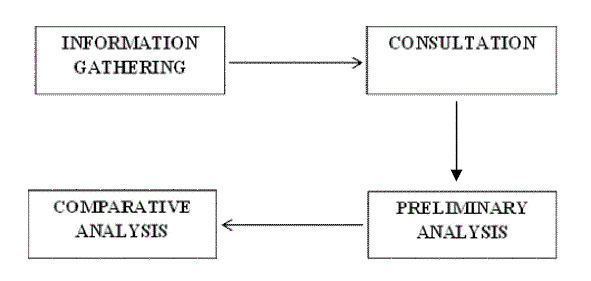 |
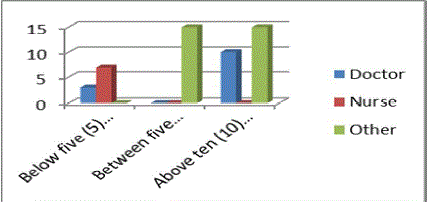 |
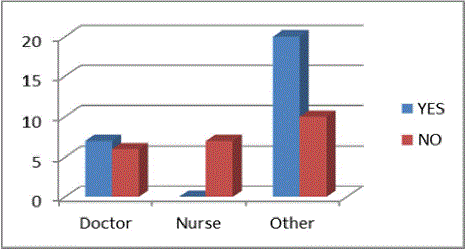 |
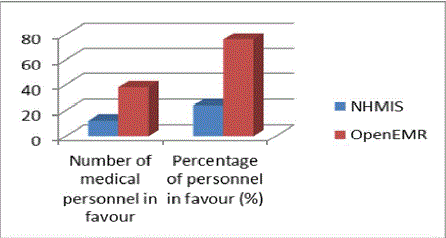 |
| Figure 1 |
Figure 2 |
Figure 3 |
Figure 4 |
| |
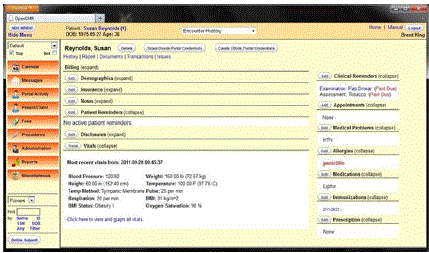 |
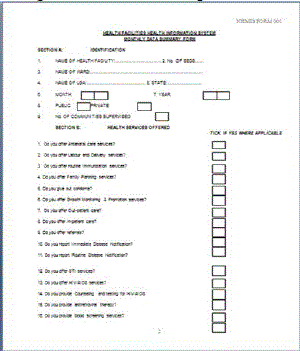 |
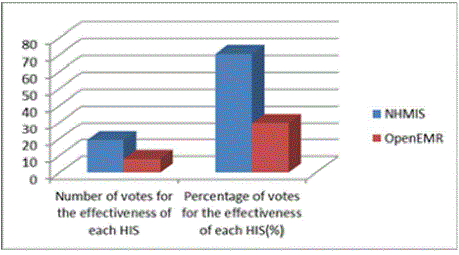 |
| Figure 5 |
Figure 6 |
Figure 7 |
|
| |
References
|
- Ammenwerth E, de Keizer N., “An inventory of evaluation studies of information technology in health care”,Methods InfoMed., Vol.44, Issue 3, pp. 44 – 56, 2005.
- Balas EA, Austin SM, Mitchell JA, et al, “The clinical value of computerized information services. A review of 98 randomized clinical trials”, Arch Fam Med., Vol. 5, Issue 8, pg. 8, 1996.
- Ebonyi State University/ World Health Organization, “Health policy and systems research project”, pp. 4-7,2010.
- Francis Lau, Craig Kuziensky, Morgan Price, and Jesse Gardner, “A review on systematic reviews of health information system studies”, J Am Med Inform Assoc., Vol. 17, Issue 6, pp. 2-7, Nov-Dec 2010.
- Hayes G, Barnett D (Eds), “UK health computing: recollections and reflections”, BCS, pg. 4, May2008.
- Jaeschke R, Guyatt G, SackettDL, “Users' guides to the medical literature, III. How to use an article about a diagnostic test. A. Are the results of the study valid? Evidence-based Medicine Working Group”, JAMA,Vol. 271, Issue 9, pp. 6, 1994.
- Paul S. Zeitz, et al, “Quality assurance management methods applied to a local-level primary health care system in rural Nigeria.” Int. J. Health Planning and Management, Vol. 8, Issue 3, pp. 235-244, 2006.
- Prof. Emmanuel ‘DipoOtolorin, FRCOG Country Director, Jhpiego Corporation Chief of Party, ACCESS Program: “Healthcare Standards in Nigeria”, Vol. 1, pp. 3-7, 2007.
- R.Elizabeth, A. McGlynn et al, “Health information systems design issues and analytic applications”, RAND Health, Vol. 3, pp. 35-70, 1998.
|
BIOGRAPHY
|
| Ayangbekun, Oluwafemi J. received his Bachelor of Technology (BTech) in Computer Engineering from Ladoke Akintola University of Technology Ogbomoso, Nigeria in 2003. He also obtained his Masters of Science (MSc) in Computer Science from University of Ibadan, Nigeriain in 2007. He is presently a PhD researcher in the department of Information Systems, University of Cape Town, South Africa. |
| Oke Ameenah E received her Bachelor of Science (BSc) in Computer Science from Crescent University Abeokuta, Nigeria in the year 2014. |